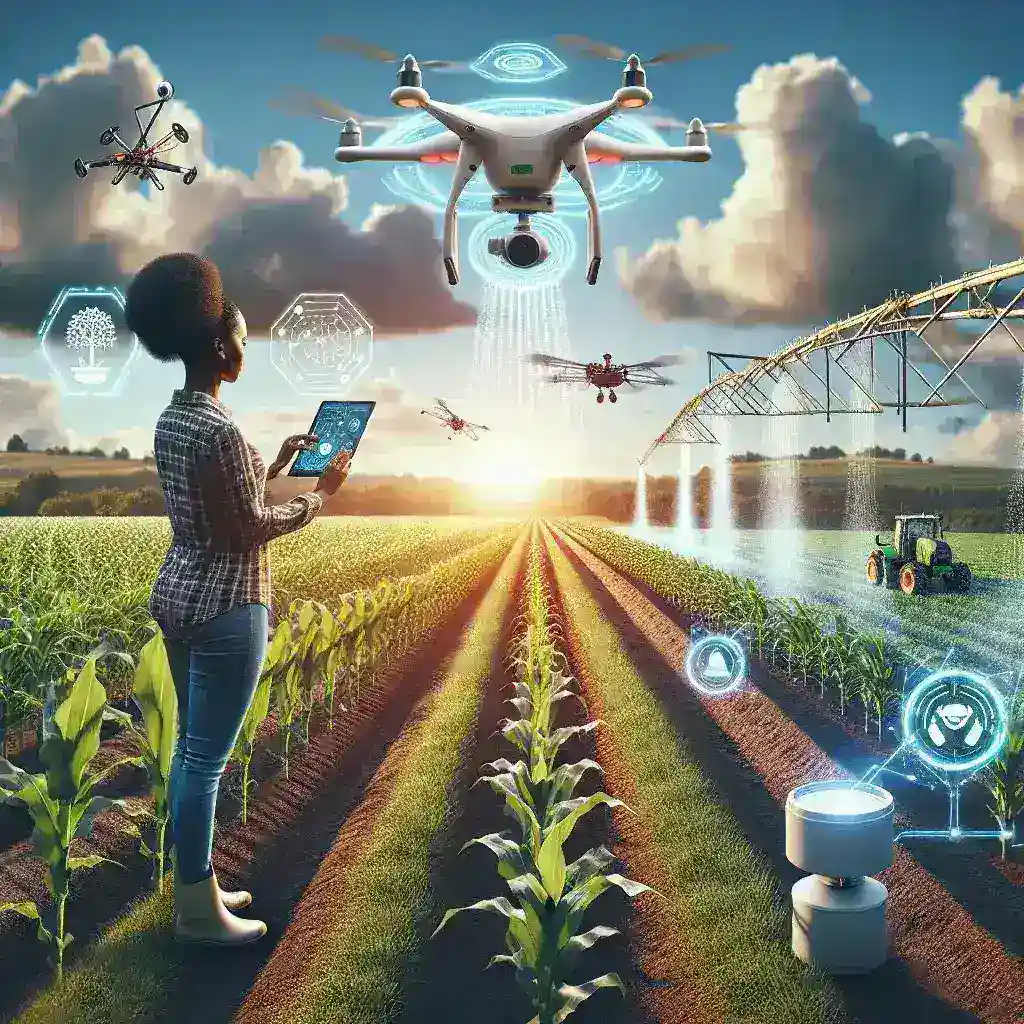Introduction
The agricultural sector has been significantly influenced by advancements in technology, with Artificial Intelligence (AI) emerging as a game-changer. As the world grapples with population growth and climate change, AI holds the promise of improving agricultural productivity in innovative and sustainable ways. This article delves into how AI is enhancing farming practices, increasing crop yields, and promoting sustainable agriculture.
1. Understanding AI in Agriculture
AI in agriculture refers to the use of machine learning, data analytics, and automation to optimize farming practices. By analyzing vast amounts of data, AI systems can make predictions, automate processes, and enhance decision-making.
2. Precision Agriculture
One of the most profound impacts of AI is in the field of precision agriculture. This approach utilizes AI-driven tools to monitor and analyze various factors affecting crop growth, leading to:
- Improved Crop Management: AI algorithms can analyze data from sensors, drones, and satellites to monitor soil health, crop health, and weather conditions. Farmers can receive actionable insights that enable them to apply resources like water, fertilizers, and pesticides more effectively.
- Yield Prediction: Predictive analytics powered by AI can forecast crop yields based on historical data, soil conditions, and cropping patterns, assisting farmers in planning accordingly.
2.1 Benefits of Precision Agriculture
The advantages of applying AI in precision agriculture are numerous:
- Reduction in resource waste, leading to cost savings.
- Minimized environmental impact through targeted application of chemicals.
- Enhanced crop quality and yield consistency.
3. AI-Driven Crop Monitoring
Crop monitoring has been revolutionized through the use of AI technologies such as:
- Drones: Equipped with cameras and sensors, drones capture high-resolution images of fields, providing farmers with vital information on crop health and pest infestations.
- Satellite Imaging: AI algorithms analyze satellite images to detect patterns and trends in crop development over large areas.
- IoT Sensors: Internet of Things (IoT) devices in fields can collect real-time data on soil moisture, temperature, and other critical parameters, enabling farmers to respond swiftly to changing conditions.
3.1 Advantages of AI Crop Monitoring
AI-driven crop monitoring contributes to:
- Early identification of disease and pest outbreaks.
- Informed decision-making regarding the application of fertilizers and pesticides.
- Reduced reliance on manual field inspections, saving time and labor costs.
4. Automated Farming Practices
Automation is another critical area where AI is making strides in agriculture. Robotic systems and AI-driven machinery are increasingly used for:
- Planting: Autonomous tractors and drones can plant seeds with precision, optimizing planting density and minimizing waste.
- Harvesting: AI-powered harvesters can identify ripe crops and harvest them efficiently, reducing labor costs and improving productivity.
4.1 Advantages of Automation in Agriculture
The integration of AI in farming automation results in:
- Increased operational efficiency.
- Reduced labor shortages in the agricultural workforce.
- Improved harvesting accuracy and speed.
5. AI for Sustainable Agriculture
Sustainability is a significant concern for modern agriculture. AI can promote sustainable practices in the following ways:
- Water Management: AI systems can optimize irrigation techniques, ensuring that crops receive the right amount of water at the appropriate times, reducing wastage.
- Soil Health Monitoring: AI tools can assess soil health and nutrient levels, allowing for tailored amendments that support sustainable soil management.
5.1 Benefits of Sustainable Practices
The adoption of AI-driven sustainable practices leads to:
- Reduced environmental footprint.
- Enhanced resilience to climate change.
- Long-term viability of farming practices.
6. Data Analytics and Decision Making
AI’s ability to analyze large datasets fundamentally changes decision-making processes in agriculture. Using data analytics, farmers can:
- Understand Market Trends: AI tools can analyze market data to predict price fluctuations and demand for various crops.
- Optimize Supply Chains: AI can enhance logistics and distribution, ensuring that produce reaches markets in a timely manner.
6.1 Advantages of Data-Driven Decision Making
The integration of data analytics in agriculture yields:
- Informed and timely decision-making.
- Enhanced agricultural profitability.
- Reduction of risks associated with market volatility.
7. Challenges and Considerations
While AI presents numerous opportunities in agriculture, several challenges need to be addressed:
- Cost of Technology: Implementing AI solutions can be expensive, posing a barrier for small-scale farmers.
- Data Privacy: The collection and use of data raise concerns regarding privacy and ownership.
- Training and Education: Farmers may require training to effectively use AI technologies.
8. The Future of AI in Agriculture
The future of AI in agriculture looks promising, with continuous advancements in technology and increased adoption among farmers. Trends to watch include:
- Growth of AI-powered agricultural platforms.
- Expansion of AI applications in smaller farms.
- Integration of climate-smart practices to ensure sustainable agricultural growth.
Conclusion
Artificial Intelligence is reshaping the agricultural landscape, providing farmers with powerful tools to enhance productivity, sustainability, and efficiency. As technology advances, it is imperative for farmers and stakeholders in the agricultural sector to embrace these innovations and harness the full potential of AI to meet the challenges of the future. By adopting AI-driven practices, agriculture can achieve a more sustainable and productive future for all.

